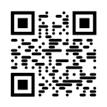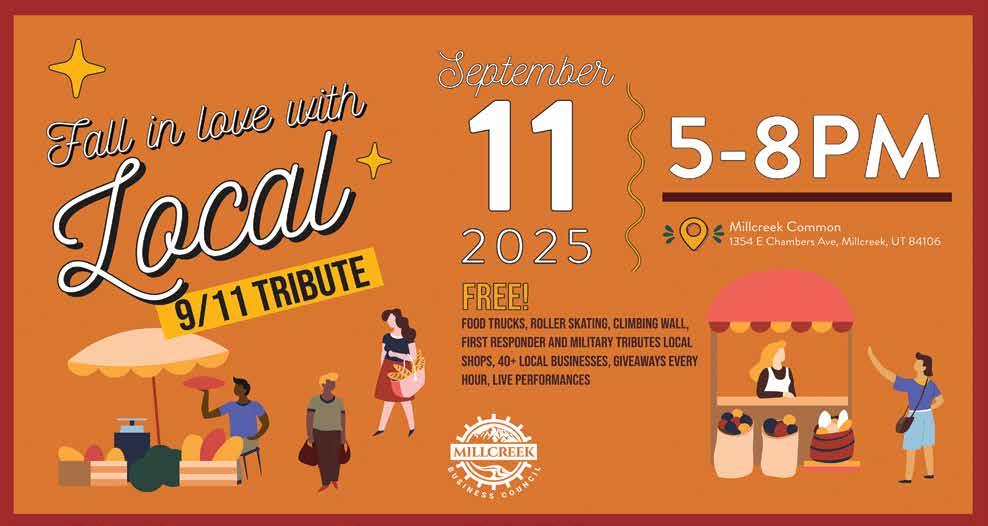

Millcreek commits to volunteerism in wake of the Willow Glen Fire
By Alexandra Straumann | a.straumann@mycityjournals.com
After fire displaced community members, the Millcreek City Council pledges to ramp up volunteer work with Just Serve
OnJuly 28, the Millcreek City Council adopted a Commitment to Volunteerism Proclamation.
The proclamation was proposed by Mayor Jeff Silvestrini, who said being involved in the community and extending a hand to neighbors in need of help creates a profound impact. He said volunteering fosters connection between people of all backgrounds, and with the proclamation Millcreek would recognize that the “values of compassion, empathy and community support are the foundation of a united harmonious society that foster connections that transcend differences.”
Silvestrini added that the council would pledge to collaborate with the organization Just Serve. Just Serve works to provide residents with greater access to volunteer opportunities and encourages community members to get involved. The mayor acknowledged that initiating this proclamation was a recent decision, but after a wildfire displaced 40 residents across two apartment buildings, it seems a very fitting decision.
On July 25, Captain Jon Wilde of the Salt Lake Unified Fire Authority acted as the initial incident commander on the scene of the fire. He was present and spoke to the council about Continued on page 4

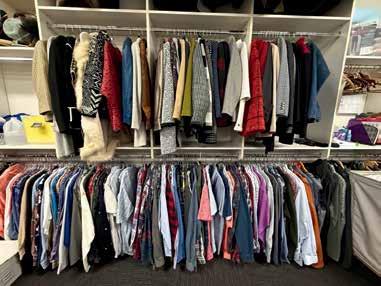




Willow Glen Fire aftermath. (Photos courtesy Millcreek City presentation)
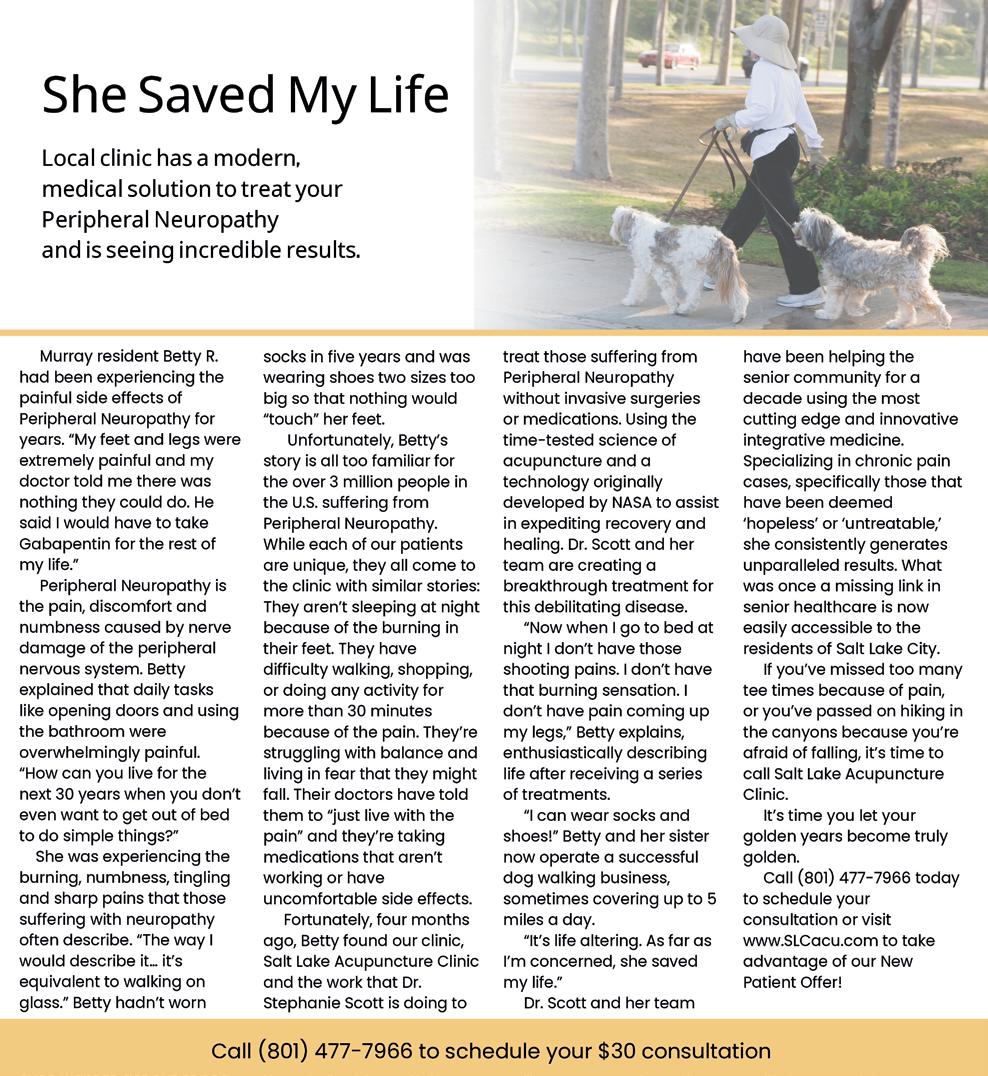
The Guy’s Guide to Prostate Health: What You Need to Know
Prostate health may not be the most glamorous topic, but it’s a crucial one for men’s overall well-being. As men navigate their 40s, 50s, and beyond, understanding and prioritizing prostate health becomes increasingly important. This guide covers the essential things every guy needs to know about this small but vital gland’s role in male reproductive health.
As men age, the prostate can undergo changes, leading to various health concerns, including Benign Prostatic Hyperplasia (BPH), also known as an enlarged prostate, and Prostate Cancer.
Recognize the Symptoms – Don’t Ignore the Signs
Being aware of potential symptoms is crucial for early detection and management of prostate issues. Common symptoms to watch out for include:
• Frequent urination, especially at night
• Difficulty starting or stopping urination
• Weak urine stream
• Pain or burning during urination
• Blood in urine or semen
• Pain in the lower back, hips, or pelvis
“If you experience any of these symptoms, it’s essential to consult with your doctor. Regular prostate exams are vital, especially as you get older. Talk to your doctor about when you should start getting screened for prostate cancer. Screening typically involves a digital rectal exam (DRE) and a prostate-
specific antigen (PSA) blood test. Early detection significantly improves the chances of successful treatment for prostate cancer,” said Dr. Blake Johnson, a urologist at Holy Cross Hospital – Salt Lake.
BPH Treatment Options
The goal of BPH treatment is to alleviate symptoms and improve the quality of life. Treatment strategies vary based on the severity of symptoms.
For mild symptoms, lifestyle adjustments can be effective, including reducing fluid intake before bedtime, avoiding bladder irritants like caffeine and alcohol, following a healthy diet, and exercising, especially pelvic floor exercise.
Moderate symptoms often require medications that either relax the muscles in the prostate and bladder neck or shrink the prostate gland.
For more severe or persistent symptoms, minimally invasive procedures offer alternatives to traditional surgery.
• Prostate Artery Embolization (PAE):
This procedure involves blocking the blood supply to the enlarged areas of the prostate, causing it to shrink over time.
• Prostatic Urethral Lift (UroLift): Small implants are placed in the prostate to lift and hold the enlarged tissue away from the urethra.
• Water-induced thermotherapy: Uses heated water to remove the extra prostate tissue.
In severe cases, surgery may be necessary to remove part or all of the prostate.
Prostate Cancer Treatment
Prostate cancer treatment depends on several factors, including the stage and grade of the cancer, the patient’s age, overall health, and personal preferences.
“For low-risk prostate cancer that is slowgrowing and hasn’t spread, active surveillance may be recommended. This involves regular monitoring with PSA tests, digital rectal exams, imaging (for example MRIs) and possibly biopsies, without immediate treatment,” said Dr. Leland Rogers, radiation oncologist at Holy Cross Hospital – Jordan Valley Cancer Center. “If the cancer is more aggressive, we have several treatment options, including surgery, radiation treatment or hormone therapy.”
Surgery – Radical Prostatectomy: Surgical removal of the entire prostate gland and surrounding tissues. This can be done through an abdominal incision or laparoscopically, using smaller incisions and a camera.
Radiation Therapy:
• External Beam Radiation Therapy (EBRT), uses high-energy beams that are targeted at the prostate gland to destroy cancer cells.
• Brachytherapy where radioactive seeds are placed directly into the prostate gland to deliver radiation internally.
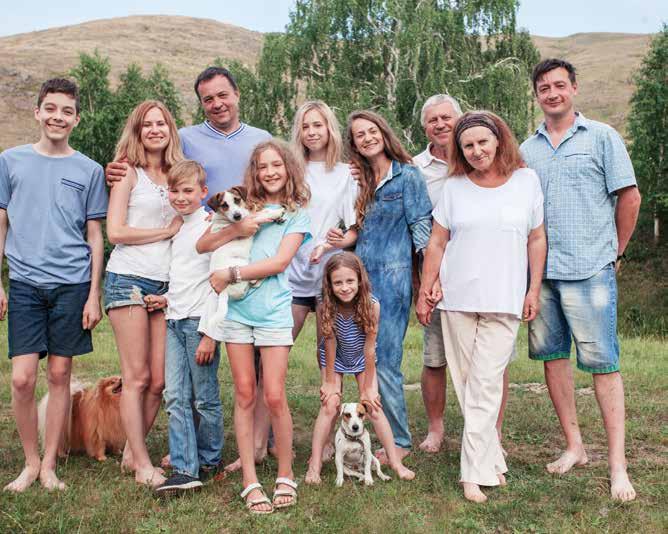
Hormone Therapy reduces the levels of male hormones like testosterone, which can fuel the growth of prostate cancer cells.
“Taking proactive steps to understand and care for your prostate health is an investment in your overall well-being,” Dr. Johnson said.
If you have concerns about your prostate health, schedule an appointment with a urologist by visiting www.mountain. commonspirit.org/care-and-health/urology. For all healthcare needs, schedule a consultation with a primary care physician or a specialist at mountain.commonspirit.org.

Learn more about the services, care providers and missiondriven work of the Holy Cross hospitals and CommonSpirit Health at www.holycrossutah.org.

At CommonSpirit Health, we make the healing presence of God known in our world by improving the health of the people we serve, especially those who are vulnerable, while we advance social justice for all.
Holy Cross Hospitals have been trusted by Utah families since 1875. Treating your whole family tree.
For 150 years, Holy Cross Hospitals have cared for Utah families in their most tender, powerful, and vulnerable moments. From newborn checkups to post-op recoveries, we’ve seen generations through their highest highs and hardest days.
We’ve done it all with one purpose: to treat people, not just patients. We care for every person with personalized treatment powered by compassion and respect.
Our belief that we all hold the power to heal helps us provide care that spans generations and stands the test of time.
Learn more at mountain.commonspirit.org/holycross150
his experience, saying that upon his arrival, the fire was approximately a quarter acre. It was on both sides of the road and moving at a moderate pace towards the south. Fueled by dry grass and brush, there was not yet a significant amount of wind, and evacuations of the apartment buildings to the south were called in by the UFA.
The blaze threatening those buildings was cleared, but on the north side of the access road, the wind picked up, which moved the flames forward rapidly. Unfortunately, the fire burned 24 units across two buildings and permanently displaced
some residents from their units.
The inability to contain the flames was certainly not due to a lack of effort from the UFA and Unified Police Department. As Wilde put it, it “would be easier to mention the agencies that weren’t involved.” Within 10 minutes of his arrival, there were three Type Six fire engines, a Tactical Water Feeder, and three Type One fire engines. There was support from every fire department in the valley, Wilde said. Additionally, Millcreek Unified Police Department Precinct Chief Kirstin Petit Brown was present and spoke about the UPD’s successful evacuation efforts at the Willow Glen Apartments during this incident.
Wilde said “as firefighters, we never like
to see buildings catch on fire and us not be able to put out the fires, but we really were happy that we got everybody out.” There were no injuries to residents of the apartment buildings and the responding firefighters reported four individuals with minor injuries that were treated on site. Residents were able to access shelter, food and medical aid from the Red Cross at a nearby church during the firefighting efforts.
This tragedy exemplifies the need for volunteerism and support for residents of Millcreek and surrounding areas, and the commitment to volunteerism codifies this.
Councilwoman Cheri Jackson initiated a motion to accept the proclamation, which was
Marissa’s is giving away free books
seconded by Councilwoman Bev Uipi. The vote to accept was unanimous, and after voting to accept the proclamation, Paul Wood, an Area Administrator for Just Serve, spoke to the council about how excited the organization is to partner with Millcreek. Wood applauded the council and people of Millcreek for their successful volunteer efforts in the past, and he added that Millcreek is the sixth Utah city to join Just Serve.
Brown provided a link to support the individuals and families impacted by the fire. If you want to donate, visit bit.ly/millcreekfirehelp. All of the money donated through this platform will go directly to the victims of the fire. l
The annual event attracts kids and teachers who want to build their libraries.
By Peri Kinder peri.k@thecityjournals.com
Marissa’s
Books is putting free books into the hands of students and teachers, encouraging kids to foster a love for reading.
From 11 a.m. to 6 p.m., on Saturday, Sept. 20 and Sunday, Sept. 21, the independent bookstore in Millcreek (3302 S. 900 East) will allow each child to select two free books from the children’s section of the shop.
“There’s no purchase necessary. All people have to do is bring their children in and each child can choose two free books,” owner Cindy Dumas said. “We make it a full-on kids’ event. We do face painting, we do popcorn, we’ve got a balloon maker who comes in. We
do some kind of cold treat and we have cookies. So it’s all geared towards kids.”
The event started at Marissa’s Books when Dumas kept receiving requests from teachers for book donations. Many of their students didn’t own books and the teachers wanted to give them one to keep for themselves. Although she was willing to donate books to classrooms, Dumas believed children should be able to pick out their own books, based on their reading preferences.
She didn’t want kids to feel like they were getting “leftover” or used books, so she started the free book event. Children can browse through thousands of brand-new books and select the ones they want to read.
During the Sunday event, educators throughout the state can show their teaching credentials to receive 10 free children’s books from Marissa’s Books.
“This is a great way to bring people into the store and they’re wowed by it,” Dumas said. “It’s a good way to in-
The Millcreek Journal is a monthly publication distributed directly to residents via the USPS as well as locations throughout Millcreek.
For information about distribution please email hello@thecityjournals.com or call our offices. Rack locations are also available on our website.
The views and opinions expressed in display advertisements do not necessarily reflect or represent the views and opinions held by Loyal Perch Media or the City Journals. This publication may not be reproduced in whole or in part without the express written consent of the owner. © 2019 Loyal Perch Media, Inc.
troduce people to the store who haven’t been here before.”
Marissa’s Books was founded in 2013 to share Dumas’s love of reading with people all over the world. It’s her goal to make reading accessible to every child and she has been recognized for her generous book donations to a variety of organizations. Marissa’s Books hosts regular book club events and features local authors. Learn more about the bookstore at Marissasbooks.com. l
PUBLISHER
Bryan Scott | bryan.s@thecityjournals.com
EDITOR
Travis Barton | travis.b@thecityjournals.com
ADVERTISING EXECUTIVES
Mieka Sawatzki | mieka.s@thecityjournals.com
Lindsay Andreasen | lindsay.a@thecityjournals.com
Jason Corbridge | jason.c@thecityjournals.com
Ryan Casper | ryan.c@thecityjournals.com
Marc Davis | marc.d@thecityjournals.com
Children are invited to visit Marissa’s Books (3302 S. 900 East) to select two free books on Sept. 20-21. (Photo courtesy Cindy Dumas)

Lydia Rice | lydia.r@thecityjournals.com 385-557-1022
Rack
Stacey LaMont Ty Gorton
9500 South 500 West, Suite 205 Sandy, UT 84070
PHONE: 801-254-5974

MILLCREEK TEAM


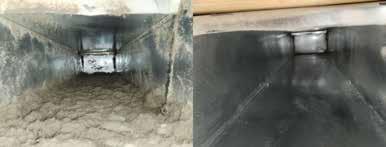
















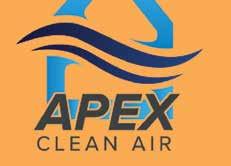







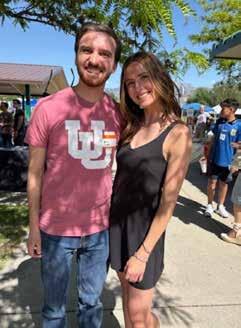
Will Steiner and Emily Hull are first year medical students at the U working at the wellness fair in Millcreek in May. (Jolene Croasmun/City Journals)

U of Utah Health Plans partnered with Operation Warm and gave out shoes to kids and spoke to parents about medicaid and health insurance options. (Jolene Croasmun/City Journals)

Medical students bridge healthcare gap at community wellness fair
University of Utah medical students organized the Spring into Wellness event in May at Sunnyvale Park which included information on student-led clinics, health screenings, free shoes, dental information and family planning.
By Jolene Croasmun j.croasmun@mycityjournals.com
Will Steiner and Emily Hull are first year medical students from the University of Utah and helped put together the Spring into Wellness event at Sunnyvale Park.
“We worked with the community health workers that work in our student-led clinics to give people more opportunity to learn about healthcare and about the different services available to them,” Hull said.
“We have information about the student-led clinics that we as students run. We invited Eyecare for Kids, the Huntsman Cancer Screening Bus and Utah Department of Public Safety here for this event,” Steiner said.
Student-led clinics are throughout our community that have attending physicians and medical students working with patients. This gives the students hands-on experience while providing access to healthcare for underserved people in the community. They offer free vaccines and vouchers for mammograms and EKGs for example.
The Wellness Bus was at Sunnyvale Park. “The wellness bus goes to more low income communities and we check people’s blood cholesterol, blood pressure and we can keep up with them over time and see if they
are improving. We have a nutritionist onboard and she helps out with all of the dietary parts of it,” Zoe said, who works with the Wellness Bus.
Pamela Silva, with Alliance Community Services was at the event. “We provide help with immigration assistance, medical insurance no matter the status of the person. We help with cancer prevention programs at a very low cost. We also have the Triunfadoras, which is the only Latino cancer survivor group,” Silva said.
Free shoes were given out to children.
“We are with University of Utah Health Plans and we offer health insurance, medicaid plans, marketplace plans and more,” said Paloma.
“We know that health insurance is kind of boring so we incentivize people to come talk to us by giving the kids shoes and once we catch the attention of the parents, we will talk to them about whether they qualify for medicaid or if they don’t have it how to get connected to those resources. We partner with Operation Warm and in the summertime we give away shoes and in the winter, we give away coats for ages 3k to 6th grade.”
The University of Utah’s School of Dentistry handed out dental care hygiene bags. Nadia, a first year dental student said, “At The school of dentistry, we work a lot with medicaid patients and we are here today to inform them of what services we can offer at the school. Second and third year students can provide screenings on people’s teeth and can refer the person to the dental school.”
A family planning table was set up to assist individuals with birth control. “We have information on family planning, pregnancy prevention, loads of information on contraception methods. We have info on the first

Zoe with the wellness bus was checking blood pressure, cholesterol and providing nutritional information for those with diabetes. (Jolene Croasmun/City Journals)
over the counter birth control pill that is called Opill and on the no cost emergency contraception like the morning after pill,” said Erica Torres, with the ASCENT Center for Reproductive Health.
There were demo kits for folks that are curious about the vaginal ring and IUD. “People like to see where it would lie in your uterus and how the Nexplanon is put into your arm and slowly excretes hormones into your body,” Torres added.
Free condoms and pregnancy tests were

Erica Torres provided information on family planning from the ASCENT Center for Reproductive Health. (Jolene Croasmun/City Journals)
provided for those who wanted them.
The student-led clinics are Fourth Street Clinic, Midvale CBC Clinic, Rose Park Primary Care Clinic and South Main Clinic. Many of these clinics do not accept insurance and provide free services, may offer sliding fee scales, some have financial assistance or a discount for those who qualify.
The next event will be called The Wellness Without Borders Fall Health Fair and will be in early October. The location and dates are still being determined. l
Bela Woller, Will Steiner, Celina Diaz and Emily Hull all working at the Spring into Wellness event last May at Sunnyvale Park. (Jolene Croasmun/City Journals)
After-school programs supporting Millcreek families risk understaffing as funding slashed
After federal funding has been cut, Millcreek after-school programs have been left to figure out a solution. Community members and advocates petitioned the council to provide funding to ease some of the unexpected financial strain.
By Alexandra Straumann a.straumann@mycityjournals.com
On July 14 the Millcreek City Council heard testimony from members of the community seeking funding for after-school programs.
It has been repeatedly proven that after-school programs benefit youth of all backgrounds. This programming has been proven to decrease the number of youth implicated in the criminal justice system, as after school hours can function as unsupervised time for vulnerable youth. Despite this, after-school programs struggle for funding and rely heavily on volunteers to support the volume of families seeking participation.
Despite increasing demands, this year the Trump Administration has made cuts to federal funding for after-school programs. Currently, the status of critical funding remains unstable, and educators are having to take action now ahead of the upcoming school year.
“Funding has been cut through the Department of Health and Human Services, and now there’s currently a pause on 21st century funding through the Department of Education,” Promise Program Manager Kayla Mayers said. As a result, programs in Millcreek and surrounding areas are at risk of being unable to meet the needs of the community.
Peter Frost is the Director of Refugee Services at the Asian Association of Utah. Frost has been working since 2012 to develop after-school programs with the association. He attended the council meeting to seek funding to sustain these programs. He detailed a long-term vision where students would have access to after-school programs at all levels of public education, facilitating a seamless transition through the school years. Frost emphasized that these programs prevent deviant behavior and encourage positive behaviors in students, and Millcreek Mayor Jeff Silvestrini concurred. Silvestrini added that the After School Alliance has found that participants in these programs are less likely to skip class and use drugs.
Frost emphasized that after-school programs sponsored by the AAOU are designed to be inclusive for students of all backgrounds,
and program capacity is dependent on the amount of funding they can raise. There are currently seven locations for after-school programs funded by the AAOU, and for the 2025-2026 school year their goal is to serve 200 students across all sites. Frost requested $109,426.10 to fund two full-time staff positions.
In addition to Frost, Moss Elementary School Principal Lindsay Adams spoke to the council about how funding these positions is a community investment. Adams explained that the loss of the 21st Century Grant resulted in a $100,000 decrease in funding for their after-school program, which is in extremely high demand. Providing young people with the resources to succeed also benefits greater society, as many students participating in these programs lack resources outside of school. Moss Elementary is a Federal Title 1 School where 70% of attending students qualify for free lunch. Adams listed a wide variety of enrichment opportunities available to students at these programs, ranging from small group math tutoring to Lego League, all designed to provide structure and safety for students who need it the most, but that funding directly impacts the number of students who can partake in these programs.
While Silvestrini seemed to agree that these programs were beneficial to all students, he asked Frost about the potential consequences of providing just one year of funding and none further. Frost responded by saying the AAOU is continuing to pursue alternative funding sources and would adjust accordingly if the situation were to arise. He said the AAOU is continuing to look for other funding resources, but that the council funding these staff positions would be of great support during this uncertain time. The mayor said that a “rainy day fund” in the budget allocated money for unexpected situations worthy of monetary funds, and he said funding these after-school programs seemed to be a good use for it.
Present council members Silvia Catten, Thom DeSirant and Cheri Jackson agreed with the mayor that funding these positions would be a good use of funds, but a budget amendment via a public hearing process would be needed first. This money is available and would alleviate some of the financial strain on these programs and would function as an investment in the community that benefits everyone in the long run. l

The Fire
Yesterday*, the blade of a lawn mower connected perfectly with a rock. The collision sent just enough sparks to ignite a flame amongst the precipitation-starved grass the public service worker was cutting. Twentymiles-per-hour wind gusts rolling through the Salt Lake Valley gave the fire just what it needed to set the entire field ablaze. Just north of that field? My apartment complex, housing me, 78 other humans and more than a dozen pets.
Two buildings still stand, completely unaffected by the fire. The other two didn’t make it. Twenty-four hours later, fire crews were still staving off embers. Foundations that hosted families for 50 years turned into trick candles that wouldn’t go out despite hours of dousing.
The good news is that, aside from a few firefighters suffering minor burns, no human being was permanently hurt by the disaster. The bad news: twenty-four families are out of a home, and a few have lost their pets. Twenty-four more families were evacuated from their living spaces and forced to find temporary housing.
I saw a lot the last few days that’s given me hope in humanity, and instead of disparaging those that didn’t do their part, I want to illuminate those that did.
All names have been anonymized in order to respect their privacy.
Let’s take Adrian, my next-door neighbor and a father of two. He’s in his mid-forties, but
By Harrison Ammon
has the heart and the looks of someone a decade younger. His son came inside, smelling like smoke. Adrian told his son to stay inside and bolted for the door. He ran to one of the burning buildings, which had only just caught fire, and began knocking on doors. Several of our neighbors were still unaware of the circumstances, including one person who was still sleeping. Their attempt to recover from their graveyard shift could have cost them their life. It also gave Adrian the push he needed to finish knocking on the doors, despite the fire’s rampant growth.
The fire department hadn’t arrived yet, but Adrian kept going. He made it to the last apartment and knocked voraciously. A dog barked from inside. He knocked harder and louder. No one was home but the dog. Adrian twisted the doorknob; it was unlocked! But the dog wouldn’t leave. It growled and snapped at Adrian when he tried to approach. But he didn’t give up. He ran outside, downstairs, finding our other neighbor Mary, who had also been knocking on doors. They were able to corner the dog and force it outside. No burns, no scratches, and several people saved. Woof. After the fire had been subdued, a local news crew tried to interview Adrian - he promptly declined.
“I’m not a hero. I don’t want any attention for this. I just did what I had to do,” he explained to me the next day. I disagree; he’s

the best kind of hero. One that wears civilian clothes, provides for his family and shows up for his community when the time calls.
Mary fits this definition, too. She is the de facto leader and matriarch of our apartment complex and a major reason for its tremendously low turnover rate. At mention of her name, you’ll hear a cacophony of praise. These are all statements uttered by residents (including myself) after the fire:
“Mary handled all of this so well.”
“I wouldn’t live here if not for Mary.”
“I love having Mary as our property manager.”
Not only did she knock on doors to evacuate residents and pets, she took the role of lightning rod and quarterback for the recovery effort. In a town hall-style meeting with local officials and residents, she answered questions on behalf of the property management company. Confusion, despair and rage filled the voices of the residents. She carried herself with poise and courage - knowing to not take any of it personally. In private, she gave her own money to a family that had nothing else and nowhere to go. She could have run from the spotlight, hid behind the front of the property management company or focused on the fact that she and her family had also been displaced. Instead, she showed up.
Last, but not least, I’d like to point out the graciousness of The Church of Jesus Christ of Latter-day Saints. Despite many of the residents having no affiliation, the church turned their place of worship into a refuge in a mo-
ment’s notice. With assistance from the local Red Cross, food, water and shelter were made available to me and everyone else affected for the following three days. In a time where religious divides are leading news cycles and never-ending death counts, the church turned the narrative on its head.
The loss for many has been significant. Unfortunately, the outpouring of support and show of community does not recoup much of that. But it does illuminate the greatness of humanity: our empathy, our willingness to sacrifice and our ability to love others we’ve never met.
Today, I woke up angry – before I’d even opened my eyes, I had organized a scathing essay in my head. I wanted to expose the owners and the property management company of the apartment complex I live in for their terrible mismanagement of the fire and its aftermath. And I still might.
But as the morning and afternoon burned on, my anger died out alongside the fire. It’s been replaced by an unwavering sense of gratitude. For my life, that I still have. For the people in my life that have expressed exceptional warmth and hospitality. And for the opportunity this presented for so many, including myself, to experience the power of our community.
If you’d like to support the people who have lost everything, please leave a comment or reply to this email for more information on how you can help.
*Author’s Note: the fire occurred on July 25, and I wrote the first draft on July 26.


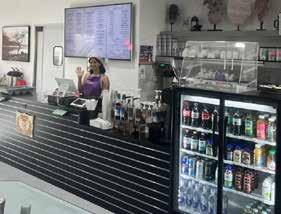

Skyline swim champion is heading to North Carolina State
Jade Garstang never lost a state swim meet in her two disciplines, and she earned a scholarship to North Carolina State University.
By Tom Haraldsen t.haraldsen@mycityjournals.com
F
or the four years she swam at Skyline High School, Jade Garstang never lost a state race in her two disciplines. Now, she’s taking her swimming prowess to Raleigh and North Carolina State University.
She’s one of only four swimmers in Utah to have accomplished that feat at the state championships, and the second female. Natalie Edge of Kearns High, who graduated in 2007, also did it, along with Long Gutierrez of Brighton High (Class of 2013) and Joe Beutler from Snow Canyon High (class of 2009). Garstang’s events were the grueling 100 meter butterfly and 100 meter backstroke.
“I started swimming when I was 6,” she said. “I was taking swimming lessons and my instructor said I had a natural talent or something. We were living in Houston at the time, and when we moved to Utah, I got involved in a summer league and joined a couple of clubs, including the
Wasatch Front Fish Market team as well as Skyline.”
She was recruited by several schools but chose N.C. State after visiting with coaches and the university.
“They have a top 10 program and the coaches were very nice,” she said. “My roommate in college is also a swimmer from New Jersey. I’m excited to get back there.” She left for school in mid-August.
“The butterfly was always like the stroke I grew up with, because I love doing underwater strokes,” Garstang said. “As I continued in high school, my backstroke improved and they became my two favorites.”
She “kind of” has her eyes on the 2028 Summer Olympic Games which will be held in Los Angeles, but qualifying is a couple of years away. She plans to major in business at N.C. State but admits, “I have no idea what I’ll do with that after college. For now, I’m just excited to live somewhere different and enjoy the experience.”
Garstang was born in Dubai and moved to Texas when she was six months old, living in the Woodlands section of Houston before moving to Utah. Among her favorite female swimmers are Summer McIntosh, Katie Ledecky and Regan Smith.
“They are all amazing,” she said. l
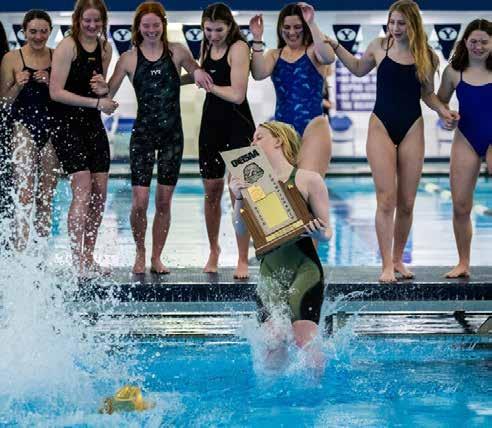




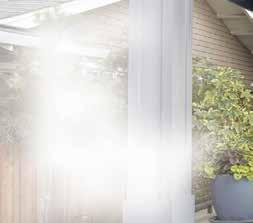










Jade Garstang and her Skyline teammates celebrated a first-place finish at the 5A state championships this past season. (Photo courtesy Brigitte Garstang)
September is National Suicide Prevention Month
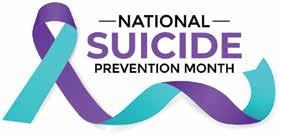
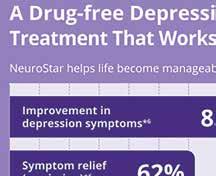






TMS is like physical therapy for the brain. It uses magnetic pulses, similar in strength to MRI, to reignite dormant connections in the brain and give you control of your depression. With NeuroStar, you can live on your terms.
Now FDA-cleared for depression in adolescents 15 and older!
“I had taken 11 different medications without any relief… NeuroStar treatment has helped me bring my life back… with a happiness that I’ve never experienced before” ~TODD









Pets

What’s your pet thinking? This animal psychic knows
By Peri Kinder |
If you’ve ever wondered if your dog is happy, your lizard is upset or your bird is mad at you, Jennafer Martin could help you find the answer. Martin is a pet psychic with years of experience communicating with animals, getting to the root of what’s bothering your furry, feathery or scaly pet.
By tapping into an animal’s emotions, Martin offers insight into their behaviors, fears and level of contentment. She first realized she could communicate with pets when she received a Teddy Bear Hamster for her 14th birthday.
“For three days, she was happy, playful and delightful, but on the fourth day, I felt she was sad,” Martin said. “She wasn’t sighing heavily, or anything like that, I just felt like she wasn’t happy…Two days later, she had 13 babies. I would think if you’re gestating 13 of anything, you wouldn’t be very happy.”
It was the first time she realized she could pick up on things other people couldn’t. It was easy for her to read the emotions of the animals and share that insight as a way to create better understanding between humans and pets.
Martin had been a tarot reader and energy worker for several years before she decided to become a professional pet psychic in 2013.
“Even if I’m reading for animals, I’m still reading for people, so they understand how interesting their animals are,” she said. “I’ve read for reptiles, rodents, fish and large animals like ostriches and horses.”
Whether it’s decoding a bird’s persistent squawking or helping a rescue dog settle into a new home, Martin said her work bridges the gap between human and animal hearts.
Most animals have the mental capacity of a 2- to 5-year-old and she doesn’t receive fully-formed guidance from the
pets. Instead, she feels their emotions, sees images or has an intuitive sense about what’s going on in the pet’s mind.
While reading for a French Bulldog, Martin said the dog kept sending her an image of something orange and puffy, and the dog didn’t like it. The owners couldn’t think of any blanket or clothing item that would cause her such annoyance until they remembered a Halloween costume from the previous year. They’d dressed her as Nemo, from “Finding Nemo,” made with orange, puffy fabric. Martin had picked up on the dog’s irritation with the costume, which the owners promised never to use again.
Holly Esch regularly reaches out to Martin for help with her six lizards and she believes it’s kept them healthy and happy. After her lizard’s partner died, Esch asked Martin how her lizard was coping with the loss and if he was open to meeting another lizard. When Esch was trying to hatch lizard eggs, she asked Martin to do Reiki energy work to keep them from dying off.
“I ask relationship questions about them because they’re kind of like humans,” Esch said. “They bicker, they fall in love, they have their own little dramas and they have their own little different personalities. [Martin] just knows a lot of things and offers another perspective.”
When a family’s rescue tortoise kept trying to escape, Martin let them know he was looking for a mate. She discovered why an anxious cat had stopped using its litter box and why a puppy wouldn’t use the bathroom outside if he was alone. When Martin’s sister had a cat dying from cancer, Martin let her know when it was time to relieve its suffering.
Martin is often met with skepticism and is sometimes “tested” by pet owners when she’s asked to work with an animal, but she’s fine with that. She said it’s not her job to convince anyone that what
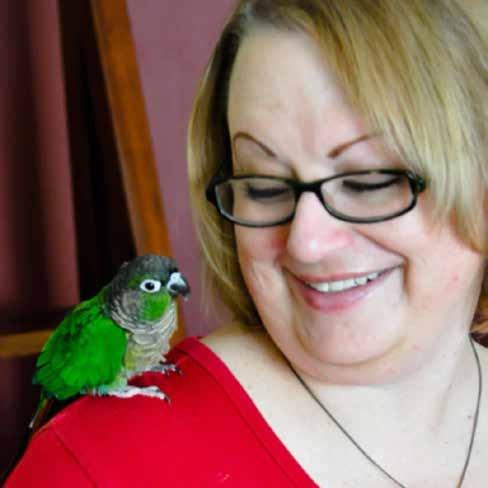
she’s doing is real.
“It’s fine to come with a sense of curiosity or a sense of skepticism,” she said. “At the end of the day, hopefully you know a little bit more about why your pet thinks or feels or behaves the way they do. You don’t have to buy in on what I do, as long as you resonate with the message that I give.”
Animals don’t always see the world the way humans do. Martin hopes her ability to communicate with pets helps owners become more patient and un-
derstanding with “naughty” behavior, especially when the animal is trying to be heard.
“I’d say 90% of the time, they’re not trying to be difficult. They’re just trying to get their needs met,” Martin said. “Sometimes, they’re just a little misguided or misunderstood…If you understand your animal better, then you feel like you can take care of them better, and then everybody’s happy.”
To schedule an appointment with Martin, visit readingsmorebyjennafer.com.
Jennafer Martin is a pet psychic in Salt Lake County who works with a variety of animals, including dogs, cats, birds, horses, fish and reptiles. She’s shown here with Rosey. (Photo courtesy of Martin)
A Paw-sitive Legacy: Humane Society of Utah Marks 65th Anniversary
By Shaun Delliskave | s.delliskave@mycityjournals.com
Sixty-five years after opening its first shelter in a modest West Valley City facility, the Humane Society of Utah marked its journey from humble beginnings to becoming the state’s largest open-admission animal resource center. The nonprofit celebrated its anniversary with a free community birthday party at its Murray location on Saturday, July 12.
“We are throwing a fun-filled all ages welcome birthday party!” the organization stated in a press release prior to the event. “Enjoy activities such as a bounce house, carnival games, face painting, balloon art, and more.”
Founded in 1960, HSU has operated as an independent 501(c)(3) nonprofit funded entirely through donations, without government or state support. Its mission has remained consistent for more than six decades: to protect and improve the lives of animals across Utah.
“This summer, the Humane Society of Utah is thrilled to celebrate 65 years of saving pets and supporting families in Utah,” the release stated. “As we celebrate this special birthday, we reflect on how far we have come, and the generous community support that made this milestone possible.”
HSU opened its first facility in West
Valley City before relocating in 1992 to its current Murray site, the Janice R. Johnson Center for Animals, funded by a request from Utah schoolteacher Janice Johnson. The larger building allowed the organization to expand its services and later add specialized adoption areas, including Kitty City, Bunny Bungalows, Dawgville, Tiny Town, and Critter Country.
“In 1972, HSU opened the first low-cost spay/neuter clinic in the Intermountain West,” the release noted. “This essential milestone helped to prevent overpopulation in the area, and gave countless pets the chance for a healthier, happier life.”
The Murray facility also continued to offer a range of services through its integrated clinic, including low-cost spay/ neuter surgeries, vaccinations, microchipping, wellness exams, and heartworm testing. Specialized programs such as CATNIP, a community cat spay/neuter and trap initiative, and SNIP, a spay/ neuter incentive program for pet owners experiencing financial hardship, were developed to address specific needs.
In 2020, HSU opened a second clinic in St. George to expand access to affordable veterinary care in southern Utah. In 2024, wellness exams were added to its
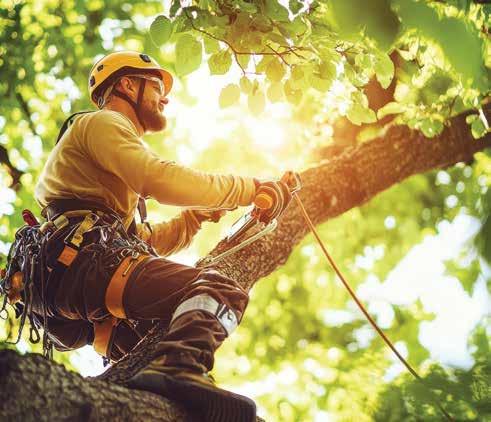

Murray clinic offerings. “These preventative care services are vital to protecting pet health and wellness,” HSU stated. “They allow pets and families to enjoy longer, healthier years together.”
In 2023 alone, HSU reported placing 5,529 homeless animals into new homes and assisting approximately 1,189 community-owned pets through its retention and diversion programs. The organization emphasized an education-focused adoption process and a policy of no time limits for healthy or treatable pets awaiting adoption.
Staffing included 53 full-time employees and numerous volunteers. Community engagement extended through adoption events, humane education, foster programs, rescue and transfer initiatives, and legislative advocacy efforts aimed at preventing animal cruelty and addressing the root causes of pet homelessness.
“Donations from our caring community have been the backbone of every expansion, every new program, and every life-saving effort over the years,” the release stated. “It is inspiring to see how our community has stepped up to the plate, generously giving love and hope to local pets in their time of need.”
As part of its anniversary message, HSU highlighted plans to modernize its facilities and expand collaboration with other organizations. “Caring for pets does not exist in a vacuum. Protecting vulnerable pets begins with supporting our human neighbors,” the release said.
While reflecting on its past, HSU also
pointed to the future. “We have accomplished so much together in 65 years,” the organization stated. “We cannot wait to see what the next 65 years will bring for pets and families in Utah.”
For more information on the Humane Society of Utah’s programs, adoption services, or volunteer opportunities, visit utahhumane.org.
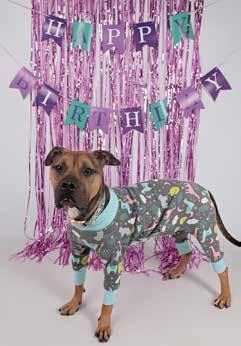
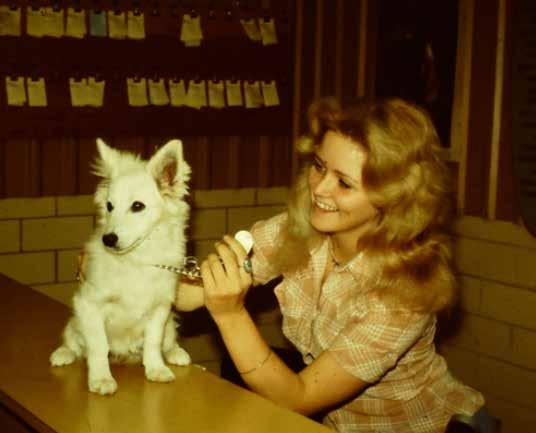
at the Humane Society of Utah in the 1970s. (Photo courtesy of
Society of Utah)
The Humane Society of Utah celebrated 65 years of caring for animals. (Photo courtesy of Humane Society of Utah)
Animal advocate opens Nonprofit spay/neuter clinic in Millcreek
By Tom Haraldsen | t.haraldsen@mycityjournals.com
Temma Martin’s personalized license plate reads “PETLADY.” As it should. For nearly 30 years, she has been the voice for pet protection in Utah, both before and after they’re born. Her latest efforts are part of the new nonprofit she has founded and created, “Operation Pawpulation” in Millcreek.
The clinic focuses on spay/neuter services, coming at a time when the numbers of dogs and cats in animal shelters have been increasing. She has championed adoption for decades, but has turned her efforts into prevention of unplanned litters for dogs and cats. Martin first became involved in this world while she was in college, concerned about animal welfare but not really thinking it would become her career.
“I didn’t start in any other area or direction,” she said. “When I was finishing my senior year of high school in Colorado, I got a little bit involved with animal rights stuff, like protesting research labs and more like actual animal rights than animal welfare. So I was sort of interested then, but when I moved back here, I worked at several businesses. When I worked at Golden Swirl’s corporate office, I saw an ad in the paper for a job posted at the Humane Society of Utah in 1993 for an education director.”
She worked for them for four years but felt she wanted to do more public relations, so after a short stint with the American Heart Association, she became media specialist for Salt Lake County Animal Services.
In that role, Martin appeared on every local TV morning program — news or lifestyle shows — bringing dogs or cats on air who were waiting for adoption from the shelter. She brought on an estimated 5,000 animals over her career, and her name and face became synonymous with pet adoption in the Salt Lake market. It often meant going to the shelter in very early morning hours, waking up a pet to take them to a station, and all four local TV stations had segments with her regularly.
A countywide reduction of force led
to her leaving the post in 2008. She was quickly approached by the Utah Animal Adoption Center, where she worked for one year, then joined Best Friends Animal Society.
Her messages about pet adoption helped. When the No More Homeless Pets coalition started in 1999, Utah shelters were alarmingly still killing almost 40,000 pets a year. But by 2020, with more and more no-kill shelters coming online, that number had fallen to 829.
Good news, with numbers headed in the right direction toward making Utah a no-kill state. Then COVID arrived, and things changed. Today, an average of 2,000 dogs and cats are euthanized in Utah.
“The numbers of animals killed has steadily increased, not just in Utah, but across the country,” she said. “People are watching what feels like a pretty major backsliding of progress, and some of the reasons for that are there’s a shortage of veterinarians. A lot of veterinary clinics are being bought out by corporations and private equity firms, and prices of all veterinary care have risen at a rate much higher than the rate of inflation.”
Two years ago, she left Best Friends to start her own nonprofit using her own money. She bought a storefront in Millcreek that was once a boat repair shop to create a clinic offering spay/neuter services to pet owners at very reduced costs, a service that she says has “gotten outrageously expensive in a lot of places.” She said the universe had something else in mind for her.
“I made some phone calls to clinics in Salt Lake County, and some of them are places I either am or have been a client,” Martin said. “A cat neuter is the lowest. They’re the least expensive and quickest surgery. And so on the low end, I believe it was just less than $300 for a cat, but on the high end, for a large dog spay, one clinic said that it could be more than $2,000. Most people can’t afford that — it’s a mortgage payment, a rent payment. So for a lot of people it’s out of reach. And for some reason, even nationally, a lot of

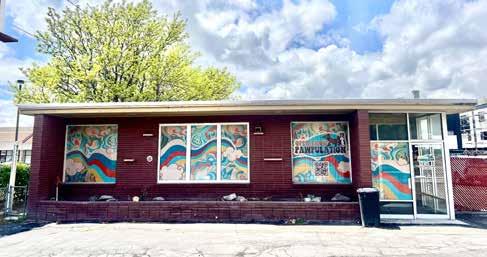
animal welfare organizations have shifted their focus away from spay/neuter, which is largely why I felt like I needed to go off on my own.”
Shelter Animals Count, a trusted source for animal sheltering data, has reported that 28% of the 2.9 million dogs entering shelters in the U.S. were puppies under 5 months old. That was an increase of more than 31,000 from the year before. More than half of the felines entering shelters were under five months old as well — 1.7 million. Those are signs of unwanted or unplanned litters of young animals given up to shelters.
“We can’t solve this problem after all the pets are born,” she said. “There will always be people who choose to buy pets, but there are so many pets in need outside of shelters. The only way we can get back on track is getting pets spayed or neutered and prevent the downstream that creates animals in need.”
Martin is proud of the 5,000-plus animals she took on TV for adoption, but “we can help a much larger number of animals by preventing them from being born. Coupled with the shortage of veterinarians, we need to refocus on spay/neuter as a normal part of pet ownership.”

(Photo
Operation Pawpulation is open on Thursdays. Call 801-509-8334 to set up an appointment or get more information.




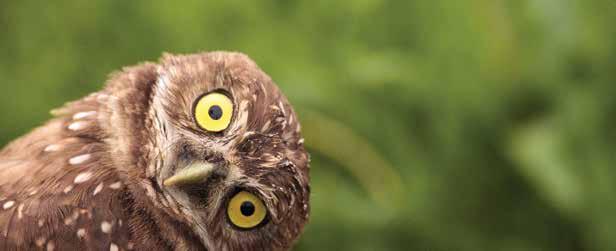










Dr. Emily Kirkpatrick offers her veterinary services to Operation Pawpulation on Thursdays each week.
courtesy of Operation Pawpulation)
Operation Pawpulation offers low cost spay/neuter services to pet owners. (Photo courtesy of Operation Pawpulation)
Your fall guide to dog-friendly activities
By Sienna Chubak | s.chubak@thecityjournals.com
With summer just coming to a close, many people are trying to find all the possible ways that they can spend their final warm nights before winter hits its full peak. If you have a dog, or a few of them, you also might be wondering how you can utilize the next couple of months to include your pets in your plans.
That’s why we’ve created a list of some local spots that you can bring your dogs to. Whether you’re looking for your dog to join you on a solo outing, you’re hoping to bring them along with you and some of your friends, or if you’re looking to have them third-wheel one of your dates, here are some great restaurants, parks, and even some bookstores that you’re welcome to bring your best pals to.
Stopping for coffee first? Bjorns Brew is a well-known pet-loving business that has a small front patio for you and your pup to enjoy the morning. While you sip your coffee, the Bjorn’s barista crew has got your dog covered with a small treat or pup cup to enjoy right along with you. So not only can they enjoy your morning coffee with you, but they will also get plenty of smiles and waves from every dog-lover in town. They even have a Pet of the Week highlight, so your pet can get some Instagram likes from their page and a special
gift from them.
If you want to head a little bit up the street, you can then stop by Corner Brew Pub, which is equipped with a dog-friendly patio. Whether you’re looking for a short stop to enjoy a beer or for a nice, relaxing lunch, feel free to bring along your pups.
On your way back to South Salt Lake, take a stop at Fairmont Dog Park. They have a large open space for your dogs to run off-leash. Afterwards, you can lead them around the pond, play some pickleball, or join in at the skate park (although I wouldn’t let your dogs run in there).
For an afternoon drink or late-night dinner spot, Level Crossing Brewing has a large patio that welcomes dogs. Although you can’t take your dog into the bar, the patio doors are often open so you can hear the live music on Sunday nights or open mic night on Wednesdays. They also have board game night on Tuesday, so feel free to bring your crew (with your dogs!) and choose from their board games, and let your pets join in on the fun.
If you’re ready for another early morning stroll, the Jordan River Trail offers tons for you and your doggo to look at. While they have to be leashed most of the time, if you walk, bike, or run up to Jordan Park, they’ve got another large



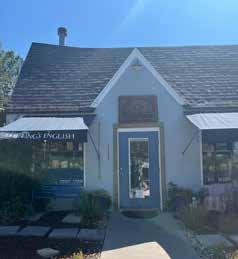
off-leash area for your dog to get some free run time, while you can cool down from yours.
Finally, if you’re looking for something more relaxed to do and are ready to take your dog on a short drive (or long walk), head over to Lovebound Library or King’s English Bookshop, both bookstores let you and your dog browse the books. That way, you can both get out of the house, and then you can both cozy up later that night while you read your best book find.
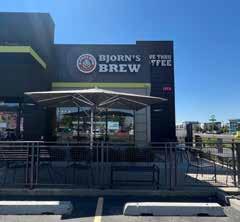
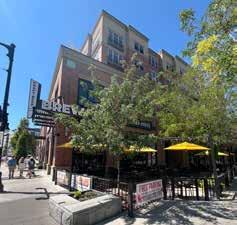




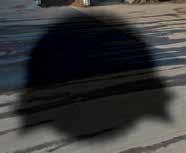





King’s English Bookshop in Salt Lake City.
Corner Brew Pub’s dog-friendly patio in Sugar House.
Bjorn’s dog-friendly patio in South Salt Lake.
Petapalooza is back, where rescue animals take center stage
By Peri Kinder | peri.k@thecityjournals.com
Join Salt Lake County Animal Services for a celebration of our furry family members at Petapalooza. This free, family-friendly event turns Wheeler Historic Farm into a haven for animal enthusiasts with pet adoptions, free microchips for licensed pets, food trucks and local pet-friendly vendors.
The two-day event will host hundreds of adoptable dogs, cats and small animals from local rescues and shelters. Friday’s experience is mostly for pet adoption, while Saturday features a full range of activities.
Guests can get a photo of their pet, talk with dozens of vendors dedicated to helping animals and visit with pet psychic Jennafer Martin for insight into their pet’s emotions and health.
“This event helps clear out not only the shelter and rescues, but also allows more eyeballs on these pets, even if people are not looking for a pet,” said Ashley Bales, Salt Lake County Animal Services communications coordinator. “People show up and support what we do. They visit the vendors, too, because typically these vendors are in the local communities. They’re local businesses, small businesses and family businesses.”
Attendees can also donate to Salt
Lake County Animal Services and learn about No-Kill Utah, an initiative led by Best Friends to end the killing of animals in Utah shelters. Learn more about animal services at saltlakecounty.gov/animal-services.
Petapalooza will be held at Wheeler Historic Farm (6351 S. 900 East) on Friday, Sept. 12 (3-7 p.m.) and Saturday, Sept. 13 (9 a.m. - 4 p.m.). The event is sponsored by Salt Lake County Animal Services and No-Kill Utah.
“Our photographer will also be there,” Bales said. “Once a month, she goes into the shelter and donates her time to do photos for all of our dogs. It’s proven that shelter dogs with a better photo have a higher adoption rate. So she volunteers her time, and she’s been doing it for like 10 years. It’s great to have her at the event to do photos for dogs in the community.”
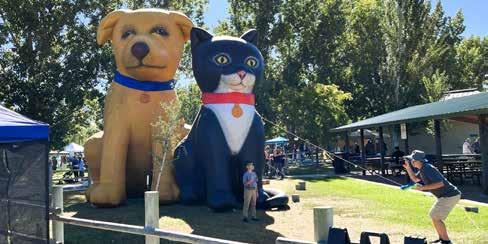
Petapalooza, seen here in 2023 (right) and 2024 (far right), is an annual event at Wheeler Farm showcasing hundreds of adoptable pets. (Shaun Delliskave and Cassie Goff/City Journals)


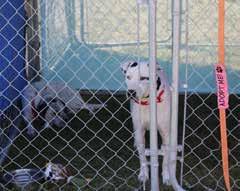



Petapalooza at Wheeler Farm showcases hundreds of adoptable pets while introducing visitors to local animal-focused vendors and services. The two-day event will be held at Wheeler Historic Farm (6351 S. 900 East), Sept. 12-13. (File photo Shaun Delliskave/City Journals)
No more bribing: Mobile Veterinary Options brings the vet to the pet
By Cassie Goff | c.goff@mycityjournals.com
Do you know where the closest veterinarian is to you right now? Or how you’d get your pet there? Sometimes, getting our non-human family members in to see the doctor can seem like a daunting task. That’s where Dr. Kate Swain has Salt Lake County residents covered. Swain is the owner and operator of Mobile Veterinary Options: a mobile veterinary service. Yes, you read that right – a vet van.
After working in two clinics for over 12 years, Dr. Swain noticed how the animals that had bad experiences in the vet’s office wouldn’t come back. When dogs and cats would get panicked on the way into the vet’s office, they’d react based on their fear instincts.
“It’s also a lot of stress on the owners,” said Swain. “It’s stressful when you know taking your pet in isn’t going to go smoothly. It makes people just stop taking their pets in.”
Dr. Swain wanted to provide better options for pet-owners as, just like with us humans, yearly exams are important for animal health.
“We are trying to get ahead of diseases,” Swain said. “If animals can get in once per year, same as with people and our yearly exams, we can catch things early with bloodwork.”
Mobile Veterinary Options travels throughout Salt Lake County to visit dogs, cats and horses outside of an office environment. During an appointment, Dr. Swain can either come into the animal’s environment or walk the animal out to the van.
“Some dogs are protective of their own space; some do better when we come to them. It’s really variable,” she said.
Swain shared how visiting the animal’s environment can help to provide some insight into what problems may exist. For example, one of the top three issues she visits clients for is allergies. Peaking into the animal’s environment who is experiencing allergy symptoms can help her deduce if they’re suffering from food or environmental allergies.
Together with Veterinary Technician

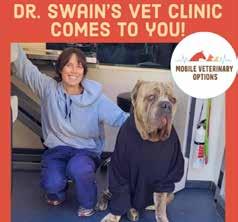
acupuncture and rescue medicine.
Mobile Veterinary Options also offers their four-legged clients options for acupuncture and laser therapy services. Acupuncture benefits include relaxation, endorphin release and response from tight muscles (especially in the backs of horses).
“Laser therapy is an option for animals who can’t have more pain medication,” Swain said. “It’s really easy to do without touching them.”
Mobile Veterinary Options has a class 4 laser that can penetrate to the bone— which can help with things like bone fractures, ear infections, and bladder stones.
Swain mentioned that chronic pain in animals is more common than many pet-owners realize. Chronic arthritis in older animals, as well as soft injury tissue in horses, is a common occurrence in their day-to-day.
catching up on spay and neutering, even in 2025. She would like to see more education throughout the County on spay and neuter.
Mobile Veterinary Options celebrated their two-year anniversary on Aug. 14. Dr. Swain’s and Moseley’s next big step in their business is to acquire a full body x-ray machine—which costs roughly $80,000.
Besides equipment, Dr. Swain has noticed a huge need for large animal vets in the area. About once per week, she gets a call about a goat, pig or cow and has to decline. She’s also noticing an increasing call volume for chickens.
Stacie Moseley, Dr. Swain offers a variety of services for dogs, cats and horses throughout the valley. They can conduct wellness, emergency, and quality of life exams as well as mobile surgeries including dental surgeries, general surgeries and spay and neuter. They’re also equipped and prepared for home hospice and end-of-life care services including qualify of life examples, pain management and euthanasia.
“It’s just the two of us and we love it,” Swain said. “We get to go on beautiful drives. It’s, overall, so much better for my personal wellbeing to be out.”
Moseley grew up in upstate New York and has been in the veterinary field for over 18 years. Her areas of interest include animal behavior and training, feline diseases, surgery and pain management. She is a certified dog trainer, pet sitter and gardener.
“Stacie is one of the best techs I’ve ever worked with,” Swain said. “I don’t know what I’d do if she quit. She’s irreplaceable.”
Dr. Swain studied veterinary medicine at Glasgow University for five years before returning to Utah to continue her education and career and be close to her family. Her areas of interest include surgery, dentistry,
“When they see their dog or cat everyday, they just don’t see that their animal is in pain,” said Swain. “A lot of animals are living with chronic pain.”
Dr. Swain highly recommends for all residents with pets to invest in pet insurance.
“It’s super helpful for people to have pet insurance because we can do more for the animals,” she said.
In addition, Swain thinks we’re still
Mobile Veterinary Options is currently traveling to take appointments throughout Salt Lake County: between West Valley and the Pointe of the Mountain. Routine check-ups and exams can be booked out for about two weeks as Swain and Mosesly plan to leave room in their daily schedules for emergency calls.
Find information and news about petcare through their socials on Facebook and Instagram at @mobileveterinaryoptions.
To request an appointment through Mobile Veterinary Options call: 801-200-3607.
Or visit their website at: www.mobileveterinaryoptions.com.
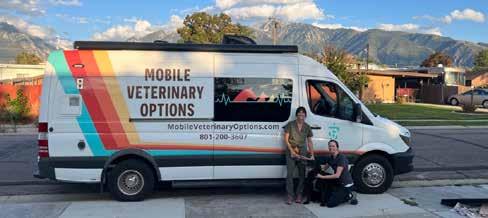


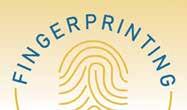








No more having to wait in a lobby of nervous animals, Mobile Veterinary Options comes to you! (Photo courtesy of Mobile Veterinary Options)
This gentle giant (155 lbs.), Tootsie Bear, did amazing for his exam with Dr. Swain! Any guesses on his weight? (Photo courtesy of Mobile Veterinary Options)
Pet Photo Contest!

WINNER
Pet Name: Sam
Description: Sam’s the kind of cute that makes your heart melt—fluffy, soft, and effortlessly photogenic, with a blissful little smile that says he knows exactly how adorable he is. His luxurious coat and regal posture make him the definition of majestic charm.
Human: Submitted by Dani Williams
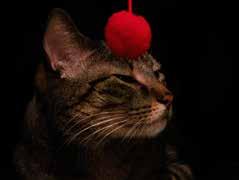
Pet Name: Nikki
Description: Nikki is a spunky lady. Always following around wherever we go, yowling for attention.
Human: Kelly Dam | Graphic Designer

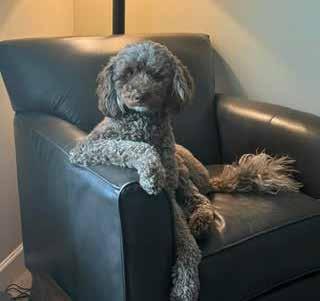
2ND PLACE
Pet Name: Finn
Description: Finn loves all things snuggles and is as sassy as can be!
Human: Submitted by Mindy Martin Tamburrion
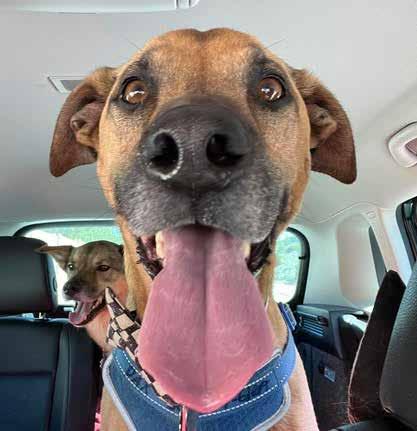
3RD PLACE
Pet Name: Dax a Doo
Description: Dax is our baby boy. We call him our BGB. Big Giant Boy. He’s a snuggle boy and best little brother to Xico.
Human: Submitted by Kristi Dancer
STAFF PET PHOTOS

Pet Name: Zoya
Description: Too smart for her own good, Zoya knows a handful of tricks. Her favorites are fetch and dance – and her least favorite is stay. If she could do anything for a day, it would be chasing squirrels and birds with no idea what she would do if she caught either. Zoya is a 7 year old Weimaraner who loves cuddles and barking at anything.
Human: Cassie Goff | Editorial Staff
Pet Name: Bentley
Description: Now pushing 15 years young, “Crazy Boy” has long been the affectionate nickname for this four-legged whirlwind, rescued from the humane society. Named after Snowflake Bentley, the famous snowflake photographer, he clearly took his name to heart by becoming a full-time snow sprinter and part-time icicle connoisseur. He is a devout enthusiast of both the trail and the beach, never tiring of either. His superpower includes turning complete strangers into lifelong friends in less than 10 seconds. Basically, if joy had a fur coat and four paws, it’s Bentley.
Human: Julie Slama | Writer
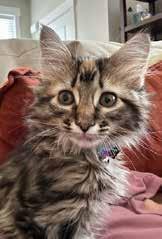
Pet Name: Binx Katherine Wallet Crayon People Sink Andreasen
Description: Meet Binx, our very first kitty and the queen of our hearts! With her fluffy coat, tufted ears, and Maine Coon charm, she’s a mix of elegance and playfulness. She’s endlessly curious—especially about water—and never turns down a good cuddle.
Humans: Lindsay | Advertising Specialist and Emmie & Gracie

Pet Name: Luna
Description: Luna is a princess and always sits upright and proper. She loves to talk and is very loud! She is shy with strangers but cuddly with those she knows. She has opinions and will let you know!
Human: Stacey LaMont | Graphic Designer
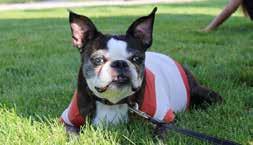
Pet Name: Cash
Description: Cash is so loving and has a playful nature, often acting as my best friend and companion. Cash thrives on interaction with me but also loves my kids and their families. Human: Yvette Newton | Marketing Strategist
Canyon Rim Cares
By Jolene Croasmun j.croasmun@mycityjournals.com
A community came together for a day of service with around 500 volunteers that completed 20 service projects during Canyon Rim Cares on July 19.
“I have been doing this for 8 years,” Nate Gibby said. Gibby is the founder of Canyon Rim is Community which is the sponsor of this event.
“Some projects are small like educational kits for different nonprofits serving schools or some are big like the 5000 kits that the Granite School District is giving to second graders,” Gibby said. “These are kits that are just games that parents can play with kids at home.” The kit provides the parents teaching tools about the fundamentals to help the children catch up. “Last year we completed 4,000 kits for the Granite School District.”
Jennifer Millett is an early childhood specialist with Granite School district “This is the second grade kit. We saw the importance of having the parents involved and most of our parents were saying to us, ‘We want to help but we don’t know what to do’. So we started with kindergarten.”
“We saw a huge improvement with kindergarten test scores. We heard from parents and teachers that the kids were working on the kits at home. There was even a
video with a child and parent working together with a kit and that child got an award at the end of the year because that child was the most improved!”
“The kits will be delivered to all of the second grade kids in Granite School District. The kits have several games in both ELA and math and provide information on where your student should be in their grade,” Millett said. “Granite Education foundation helped get the funding to put these together.”
CAWS brought sweet fostered fur babies to be adopted. “We are an all foster, all volunteer rescue for dogs and cats. We rescue them from shelters, we get them vetted, spayed, neutered and ready for adoption. Today we are doing bracelets and pet portraits to give more attention to our animals” said Haylen, a volunteer from CAWS.
Some of the projects being worked on included stuffing backpacks for school age kids for the The Boys & Girls Club. The Birthday Box foundation assembled party supply kits so that kids in need could still celebrate their birthdays.
River clean-up kits were made for Jordan River Commission, sensory kits for The Children’s Center and supply kits for refugees for the Utah Refugee Connection
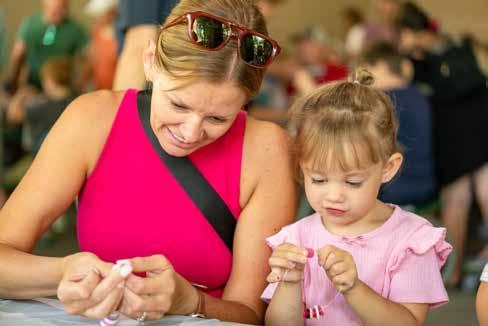


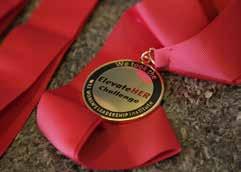

Volunteers from the community came out young and old to complete service projects including making bracelets for the animals that CAWS brought to be adopted.(Rob Norbutt/Infinity Machine)
were just some of the other projects volunteers worked on during the event.
A mural painted on the wall in Canyon Rim Park will be seen by all that visit the park. “The mural is in honor of the patients of the rare disease community. Today we are painting the background and there will be likenesses of actual patients from our community right here in Utah that will be added to the mural. Our goal of this is to bring awareness to the rare disease community,” said Sylvia Lam from the Rare Disease Council.
An artist designed the mural and vol-
unteers came by to help paint it.
“I live in the neighborhood and I am a local artist,” Kaylee Rakowski said. “I come to this park every day. I am a landscape oil painter. It has been quite a treat and to have everyone help me. I really wanted this to be a space that is kind of zen.”
“The intent of Canyon Rim Cares is to develop a sense of community. When businesses, residences and nonprofits come together, miracles happen within a community. This is one of them. If we get our community to care about each other it makes a good community a great one,” Gibby said.

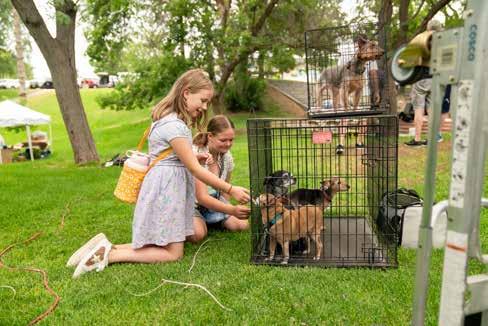
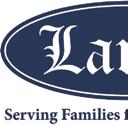

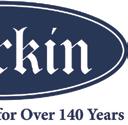
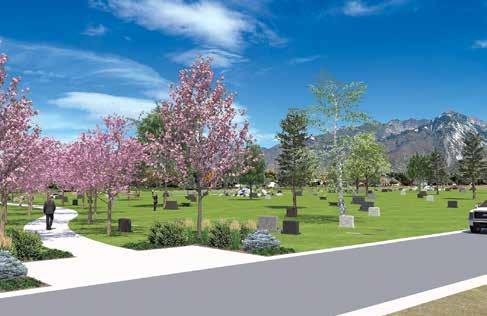

Volunteers painted a mural on a wall in the Canyon Rim Park. (Rob Norbutt/Infinity Machine)
Children look at the CAWS puppies up for adoption during the Canyon Rim Cares event at Canyon Rim. (Rob Norbutt/Infinity Machine)
Superintendent Hart’s first test: Navigating uncertainty in week one
Funding supports nonprofits focused on digital literacy and career training.
By Peri Kinder peri.k@thecityjournals.com
Week one didn’t go as expected. Utah’s new State Superintendent of Public Instruction Molly Hart faced an unexpected challenge when President Donald Trump’s administration froze education funds that were set to be dispersed.
“It was surprising he froze funds that had already been approved through Congress,” she said. “I was anticipating changes, but I was anticipating them moving forward. So, when those changes happened a week into my tenure, it threw a wrench in the kickoff.”
Hart, who previously served as executive director of Summit Academy Schools for two and one-half years, hadn’t planned to follow in the footsteps of former superintendent Sydnee Dickson, who served for nine years. At Summit and as vice chair of the Utah State Board of Education, she felt she had found her place—working directly with students and leading through change.
“When opportunity comes, you got to answer the door,” said the veteran educator from Sandy. “I didn’t ever really see myself leaving a school setting where there were kids and I could be involved in an actual school day. I thought I hit the sweet spot, but opportunity knocks and to make a difference at this level, and to make things happen, how do you turn that down? It’s an exciting opportunity.”
It’s now been two months since Hart, a former teacher who served as principal at Mt. Jordan and Albion middle schools, was sworn in as state superintendent. She and Dickson collaborated to ensure a smooth transition in June into the K–12 summer break.
“I stay moving from 7 a.m. to 7 p.m. I haven’t even unpacked all my boxes. It’s back to school for USBE, just as it’s back to school for schools,” Hart said.
City Journals posed questions to Hart about key initiatives and pressing issues in education.
What was it like when the government froze funds?
The president was clear about his priorities all the way along. We did eventually get those funds, so districts are able to pay their summer programs’ and afterschool programs’ people.
A central tenet of Trump’s plan is to eliminate the federal department of education. Is it going to impact some of the programs, such as Title I schools and others?
There are three big federal education programs: the free and reduced lunch program, the Title I program and IDEA (Individuals with Disabilities Education Act) or special education. USDA already co-manages the lunch program along with department of education. The plan for the others, at one point, was to move them to other agencies, and the funding was to continue in some form. But other Title programs, like Title II (supporting effective instruction), Title III (language instruction for English learners and immigrant students) were the ones that were frozen. We’re now looking at the budget process moving forward for when we get federal funds. There are a lot of different timelines that intersect, and the U.S. Senate pushed back against some of the president’s proposals, so it’s just an evolving story with a shifting landscape. We have to stay agile, consider the information we have at any given time and be ready to improvise.
If the federal department of education fades away, is Utah OK to run our education system?
Many people don’t think it will completely fade away. The department of education may still exist, but it could be much smaller in size and scope. It would take congressional action for the department to “disappear.” Saying that, it was nowhere on my bingo card that funds would be frozen. And, there was nowhere on my bingo card that those funds would be unfrozen. What’s extraordinary about these times is the different paths and the uncertainty of the next action. The best thing I can do is help others prepare for contingencies.
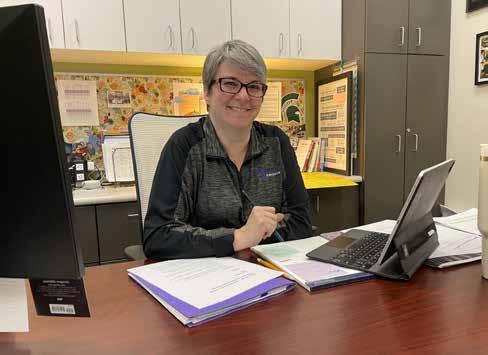
Utah is well positioned to manage and keep consistent educational opportunities for kids. The problem is always where the money comes from, when the money comes, and how the money comes, so whether it comes from the state or from local, or from federal, and how it comes, what kinds of strings are attached, what kinds of choices we get to make, and how it’s administered. It’s a new game — and all those spaces are changing at the same time. At the end of the day, our teachers and principals are going to open schools this fall, and they are going to give students the best education out there.
Share your top priorities.
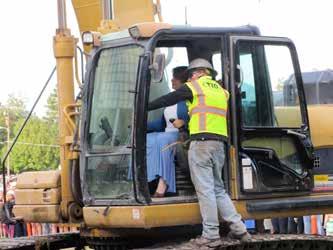
Molly Hart, now the state superintendent, received directions how to drive the excavator into the former Mt. Jordan school building to make way for a new school. (Julie Slama/City Journals)
It’s important to me that we get the various constituents together. There’s been a fracturing of communication in education, and we’ve become very polarized needlessly. As state superintendent, I can bring disparate groups of people together and create synergy. It’s important the USBE is responsive, efficient and meeting the needs of the various stakeholders and also, communicating accurate data and information to the legislature, to the field and throughout the agency. It’s important we find ways to increase student achievement and knowledge and students come away knowing how to solve problems and knowing how to meet the needs of communities in the future. That is our goal and it’s important to me that stakeholders come together and keep that in our sights. We’re an agency of the government. We serve the people. We are servant leaders. We need to do that efficiently and without wasting resources, and we need to do it transparently.
Utah has 70,000 students. Many teachers and principals are concerned about low attendance. How can USBE help? Attendance is one of those things that can’t be solved with any one single approach. We’ve got to engage families and parents and understand why students aren’t coming to school and figure out where that disconnect is, and work on the experiences in school so that it’s a place students understand the need and what they get out of being there. It’s got to come from not just the education community, but communities at large and at the individual level. It is individual students and their parents making a choice each day whether or not they’re going to attend. We’ve got a toolbox to support districts as they identify barriers and work to remove them. As a former principal, I do know there’s a lot a school can do, but I also understand the limitations of what a school can do and where a district or a state agency or the legislature or a community agency can have considerable impact on student rights and attendance rates. One thing we can do is look at schools at higher attendance rates and figure out what’s different between those and schools where attendance is an issue. There’s just a lot packed into attendance. It’s not simply missing a resource like a textbook. We need to look at everything. Does it have to do with transportation? Does it have to do with illness? Does it have to do with online learning? Is it a family priority or is there a barrier? Could it also be a data issue? There are a lot of questions to be answered.
What are some challenges facing our students in schools?
Seen here as principal of Albion Middle in 2023, Molly Hart plans to make it a point to listen to families, teachers and others as state superintendent of instruction. (Julie Slama/City Journals)
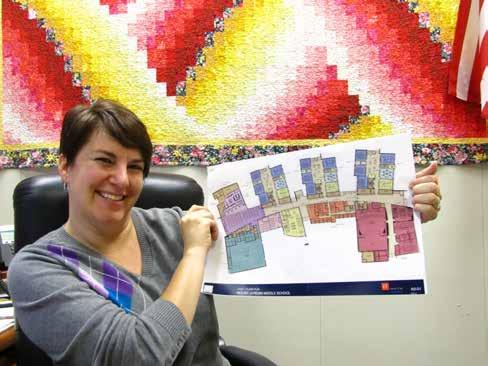
The changing workforce and what the workforce is going to need and what students are going to need to be prepared for the workforce is a challenge. Education spends a lot of time working with workforce, higher ed and workforce services industry partners to understand their needs, what they’d like to see our graduates be equipped with. A couple years ago, students were studying computer programming or data science and there were 1 million jobs. Well, here comes AI, and maybe some of those pieces can be outsourced, and the data scientist needs to have a whole different set of skills. That rate of change is accelerating, so it’s always a moving target. There’s a lot of movement of students geographically and making sure students information get from point A to point B safely, so there’s continuity in services and students can pick up where they leave off, pick up in one place where they leave off in another. That’s a challenge as well.
You have said as an educator, you love hearing from parents, getting feedback and having those conversations. How are you going to do it now?
I’m working on creating listening groups and listening tours. As the school year gets started, I’ll be traveling around, coordinating and attending focus group meetings, along with state board members and legislators and community partners and districts, intentionally hearing those (parents’) voices and asking those questions. My plan is to ask the local legislators, the local board members and the state board member to be part of it and make sure as many people want to attend, can attend. There would be two meetings in the same community — one to listen to
Utah spends less than $10,000 per student (ranked last in the country). Is more needed? If so, how are you going to get more and what is it needed for?
That is a huge question. We have to live within our means and if that’s what we get, then that’s what we get. We can’t spend more. Of course, we could use more, but it’s government money, which means it came from the people, so every time we ask for more, we’re asking people for it from their wallet. What’s most important is that we’re using the money we do have in the best way possible. I can ask, ‘What are we getting for the money that we do spend? Are there things we’re spending more on, that maybe were needs of the past, but are not current needs?’ We need to make sure money is going to the right places. We want to use the money we do have in the best way possible for the best outcome to set up our students for success, whatever success looks like for them and their families.
Utah students are pushing graduation rates close to 90%; how does that compare to national standards?
and people in the room gasped. We are doing really great things in Utah and I’m proud of the work we do in our communities and at our state level, but you just don’t settle. You just don’t. We’re going to keep on doing great things for our kids and as new situations and new realities emerge in our communities and in our workforce, then we adjust our practices accordingly. We keep looking forward for those opportunities and those teachable moments.
Utah is ahead of the national average on test scores. Can Utah students do better?
I’m very proud of the work our families and students do. Of course, we can do better, and, of course, I want them to do better and I’m going to push them to do better. There’s always room to grow. I like to be a little relentless with pushing everyone to be better; we don’t ever quit on kids. We keep moving forward and putting one foot in front of the other. I’m never going to say, ‘We’ve arrived’ and ‘It’s good enough.’ l
parents and hearing what they have to say, and then a second, listening to teachers and educators to get feedback there. (Once set, the schedule will be posted on the USBE website and communicated through local districts and through school community councils.)
It’s amazing. When I go to national activities or conferences or gatherings, Utah has the envy of a lot of states. At a national conference, one of our staff members shared our teacher retention rate (91% average retained in a single year)
Better Shelves. Custom Solutions.





With a history of involving all stakeholders, Molly Hart shares final plans for the new Mt. Jordan Middle School in 2013. (Julie Slama/City Journals)
The
Hope takes center stage at the Healing Utah Success Summit
summit features mindfulness, motivation and community to create a safe space for healing.
By Peri Kinder peri.k@thecityjournals.com
For those impacted by addiction, the journey to recovery can seem overwhelming. People experiencing substance misuse often feel hopeless, as well as the family members and friends trying to help them.
The Healing Utah Success Summit is a safe space where individuals in recovery can share their stories. HUSS co-founder Al Richards said being open and vulnerable fosters a sense of community, resilience, purpose and hope.
“We bring in so many different people to share their stories,” Richards said. “We talk about mental health and we talk about those on the other side of addiction. We talk to family members and the event helps them understand a little bit more about addiction and what their loved one is going through, because it affects everyone.”
Richards and co-founder Malory Jacob will host the fifth HUSS on Saturday, Oct. 4, from 10:30 a.m. until 3:30 p.m. at the Miller Free Enterprise Center (9740 S. 300 West) in Sandy.
Featured speakers include Joe Valentine, Manny Lopez, Alan Fahringer, Cap Summerhays, Brooke Rushton, Tina Erdmann and Amber Kay. They each will share experiences to help break the stigma of addiction and provide a lifeline for those who are struggling.
Kay spent years living on the streets before starting her journey to recovery. She will share her story at HUSS for the first time in the hope it will encourage others to get the assistance they need.
“Being part of this community helped me begin to see my worth, even when I couldn’t feel it,” Kay wrote on her Facebook page. “It pushed me to face my fears, to lean into the uncomfortable spaces and to believe that healing was possible, not just for others, but for me too.
“I’ll be speaking at the Summit, sharing a part of my story I’ve never spoken out loud.
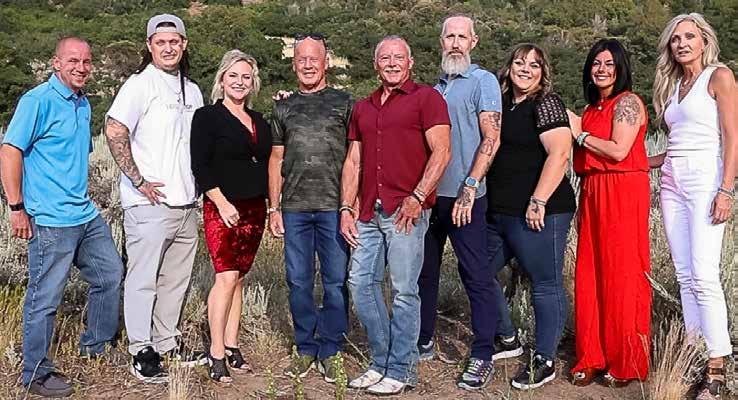
It’s terrifying. It’s freeing. It’s real. And for the first time, I’m walking in my whole truth, without shame, just raw, honest hope.”
Each speaker will discuss the life changes that took them through addiction into longterm recovery. Many speakers were involved with gangs, spent time in prison, endured the foster care system and carried the shame of those experiences. Richards said HUSS is about releasing the shame and regaining power by showing up.
“You will get something out of it, you will have an aha moment somewhere in that event with possibly more than one aha moment,” he said. “If we could just change one person’s life, just one, the ripple effect will be so huge.”
Richards, who hosts The Other Side of Addiction Podcast, understands that substance misuse recovery can feel overwhelming. He advises baby steps for those looking to regain control of their lives. Taking life one moment
at a time, breaking it into achievable steps, makes the process achievable and long-lasting.
“When you find yourself where you’re struggling, there are so many people you can call,” he said. “It’s just putting your mind in a different mindset and then learning how to fire stronger, better neurons and get involved in the community and have good people around you. That’s what makes a big difference.”
Family members are invited to attend the summit to help gain an understanding of the battles their loved ones face in recovery. Enabling behaviors can keep someone dealing with substance misuse from facing consequences or accepting accountability. Families and friends are given resources and tools to help their loved ones work through difficult issues that lead to healing.
Richards said a lot of recovery is learning to feel emotions. Using numbing tools, like drugs or alcohol, can keep a person from
fully engaging in life. HUSS encourages honesty, emotional intelligence and compassion to build a community focused on healing, recovery and second chances.
“Life’s not always great,” he said. “Life hits us and it’s one of the hardest fights we have ahead of us. But you learn certain skills and certain habits to allow yourself to feel those emotions.”
HUSS tickets are $25 and can be purchased at healingsuccesssummit.com. Group discounts are available for groups from recovery centers. For more information, email hopeandabundance@gmail.com
“I’ve interviewed over 300 people on my podcast,” Richards said. “So many of them have said, ‘When I started my recovery, I didn’t think I was going to make it’…They all said, ‘You know, it was a struggle, but it was worth it.’” l
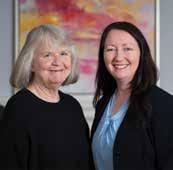


(From left) Joe Valentine, Manny Lopez, Malory Jacob, Alan Fahringer, Al Richards, Cap Summerhays, Amber Kay, Brooke Rushton and Tina Erdmann will speak about addiction recovery at the fifth annual Healing Utah Success Summit on Oct. 4. (Photo courtesy of Richards)
It’s barely September and social media pages are already flooded with autumn recipes, pumpkin hacks and tips on how to dress for sweater weather. For Utah, sweater weather in September is just dumb because it’s still 90 degrees in the shade. Wear a cute, fall pullover at your own risk.
Instagram influencers suffer from September insanity, bizarrely excited to roam through corn mazes (nature’s escape room), decorate porches with scratchy hay bales and crooked scarecrows, and stage family photo shoots at apple orchards with everyone grumpily dressed in red and black flannel.
In September, you’re legally required to wear a wool scarf when ordering at Starbucks, where each drink has a dash of cinnamon. Pumpkin spice is everywhere, from pancakes to deodorant, popping up out of nowhere like political yard signs and herpes.
These aren’t necessarily bad things. I love me a plaid shirt and fresh-baked apple crisp, but until Monday, Sept. 22, at 12:19 p.m. (MDT), it’s still summer and I will behave accordingly.
Here’s what shouldn’t happen before Sept 22: high school sports, pumpkin patches, hay rides, the NFL. None of those are summer activities. Nada.
Even if the temperature drops to 45 degrees by mid-September (which it won’t), I’ll still wear flip-flops and gym shorts as
Stop Pretending it’s Autumn

my casual work outfit. Well, flip-flops only if I’m going somewhere fancy, like Dollar Tree. I might as well not own shoes during the summer.
After going barefoot since April, my feet have reached the hardened leather stage where I could safely walk across a lava flow. My granddaughter recently poked my heel and asked, “What happened to you?” I tried to explain the development of callouses due to traversing 110-degree asphalt with no shoes, but she’d already turned her attention back to Roblox.
Even Mother Nature betrays me as the Wasatch Mountains start to turn a brilliant red, orange and gold. Sunset gets earlier each night, disappearing a little bit at a time, like when I’m trying to sneak out of a networking event. The air takes on a distinctly “autumn” glow, but that might be arsenic floating over from the Great Salt Lake. Living in Utah is exciting.
Farmers’ markets are still open, but

the options quickly turn from juicy, sweet peaches to…umm…squash? Who eats squash? Raccoons? Hardened criminals? I use pumpkin for cookies, bread and carving, but no one actually EATS pumpkin. That’s like saying someone actually eats rhubarb. I don’t have time for your nonsense.
One good thing about September is that Michaels no longer sells Halloween items (which they started promoting in May) but is now decked out for Christmas.
Believe it or not, I love fall, but only when seasonally appropriate. Summer flies by, so I must savor every sunny moment before Salt Lake sinks into six months of cold,
gray darkness, like Persephone descending to the Underworld.
On the first day of autumn (Sept. 22, not Sept. 1), I’ll drape fall garlands around the kitchen, light apple-scented candles, put on cozy socks (an easy transition from being barefoot) and make a big pot of stew that no one will eat because it has onions.
Within a few weeks, my social media pages will display photos of squirrels gathering nuts, my grandkids bickering at a harvest festival, Tom refusing to eat apple cider donuts and my fire-orange pedicure hidden inside a cute pair of fall boots. But only in appropriate autumnal timing.










MEET DR. HARARAH, M.D.
Dr. Hararah, a triple board-certified physician, completed his residency in Family Medicine at NYU Langone and a fellowship in Undersea and Hyperbaric Medicine/Wound Care at SUNY Upstate University Hospital. With additional training in Bariatric Medicine and certification from the American Board of Obesity Medicine, he brings expertise in primary care, dive medicine, bariatric medicine, and clinical hyperbarics.
A firm believer in the biopsychosocial approach, Dr. Hararah views patients as complex individuals whose lives and experiences shape their healthcare. Known for his compassionate care and dedication, he listens intently, prioritizes your well-being, and works to find the best diagnosis and treatment plan.
As the owner of Riverstone Medical, Dr. Hararah is committed to helping you achieve your best health.
OUR SERVICES
Primary Care:
• Annual preventative physical exams
• Cancer screening
• Sick visits
• Specialist referrals
• Medication refills
• Chronic disease management
Specializing in Wound Care:
• Chronic, non-healing wounds
• Acute, minor wounds
• Diabetic foot ulcers
• Venous ulcers
• Arterial ulcers
• Pressure injuries...and more!
Patients First:
“
Dr. Hararah understands the daunting and sometimes demoralizing feelings health care sometimes causes, and wants patients to be truly seen and valued as human beings.”
